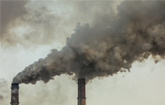Study in AIP Advances Describes How Muon Imaging May Allow Experts to Assess Damage Inside Fukushima Daiichi Reactors
WASHINGTON, Aug. 7, 2013 /PRNewswire-USNewswire/ -- Critical to the recovery efforts following the devastating effects of the 2011 tsunami on Japan's Fukushima reactor is the ability to assess damage within the reactor's core. A study in the journal AIP Advances by a team of scientists from Los Alamos National Laboratory (LANL) shows that muon imaging may offer the best hope of assessing damage to the reactor cores and locating the melted fuel.
(Logo: http://photos.prnewswire.com/prnh/20130627/DC39790LOGO )
Muon imaging, which utilizes naturally occurring muons created in the atmosphere by cosmic rays to image dense objects, should solve the problem of determining the spatial distribution of the reactor fuel in the short term, the LANL team said.
"Muons are scattered more strongly by high-Z materials such as uranium fuel in Fukushima's reactor," explained LANL researcher Haruo Miyadera, who is the lead author of the paper. "By measuring the scattering angle, and understanding the physics of Coulomb multiple scattering, one can assess the locations and amount of the melted fuel."
This new technique offers significant advantages over traditional muon imaging. The traditional method is similar to Roentgen radiography in that it measures muon-flux attenuation after an object. Muons, however, are scattered in a manner that causes image blur.
"The new LANL method measures muon trajectories both before and after the object," said Miyadera. "By combining the incoming and outgoing trajectories, one can more accurately specify the location of the scattering, yielding a clearer image."
Why is Imaging Fukushima So Challenging?
Assessing the core damage at Fukushima is a very difficult challenge, said Miyadera. In the case of Three Mile Island, cameras were eventually installed in the reactor pressure vessel to assess the damage. However, in the case of Fukushima Daiichi, access inside the reactor pressure vessel has been very limited due to high radiation. To address this, the team plans to install detectors in front of the reactor building and on the 2nd floor of the turbine building so that their muon scattering technique can assess the damage without direct access to the reactor building.
The LANL team has faced numerous challenges, from operating detectors in the high radiation environment at Fukushima Daiichi to the difficulties in finding funding for a project at an American laboratory to address a problem in Japan. The next step for the crew is a demonstration of their technique using a research reactor in Kawasaki, Japan where they will verify the spatial resolution of their technique and track the effects of obstructions such as concrete walls and steel construction materials on the muon scattering.
"A few months of measurement will reveal the distribution for reactor core fuel and will accelerate the planning and execution of reactor dismantlement, potentially reduce the overall project span by years, reduce overall worker radiation doses, and help Japan and the nuclear power industry in the recovery process from this catastrophic event," Miyadera said.
The article, "Imaging Fukushima Daiichi reactors with muons" by Haruo Miyadera, Konstantin N. Borozdin, Steve J. Greene, Zarija Lukić, Koji Masuda, Edward C. Milner, Christopher L. Morris and John O. Perry is published in the journal AIP Advances. See: http://dx.doi.org/10.1063/1.4808210
Authors of this publication are affiliated with Los Alamos National Laboratory, Lawrence Berkeley National Laboratory and the University of New Mexico.
ABOUT THE JOURNAL
AIP Advances is a fully open access, online-only, community-led journal. It covers all areas of applied physical science. With its advanced web 2.0 functionality, the journal puts relevant content and discussion tools in the hands of the community to shape the direction of the physical sciences. See: http://aipadvances.aip.org
Contact for More Information:
Jason Socrates Bardi
+1 240-535-4954
[email protected]
SOURCE AIP Publishing
WANT YOUR COMPANY'S NEWS FEATURED ON PRNEWSWIRE.COM?
Newsrooms &
Influencers
Digital Media
Outlets
Journalists
Opted In





Share this article